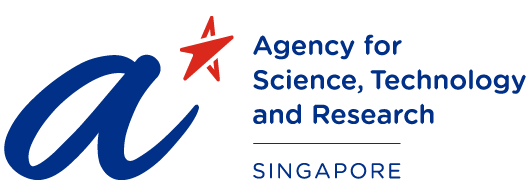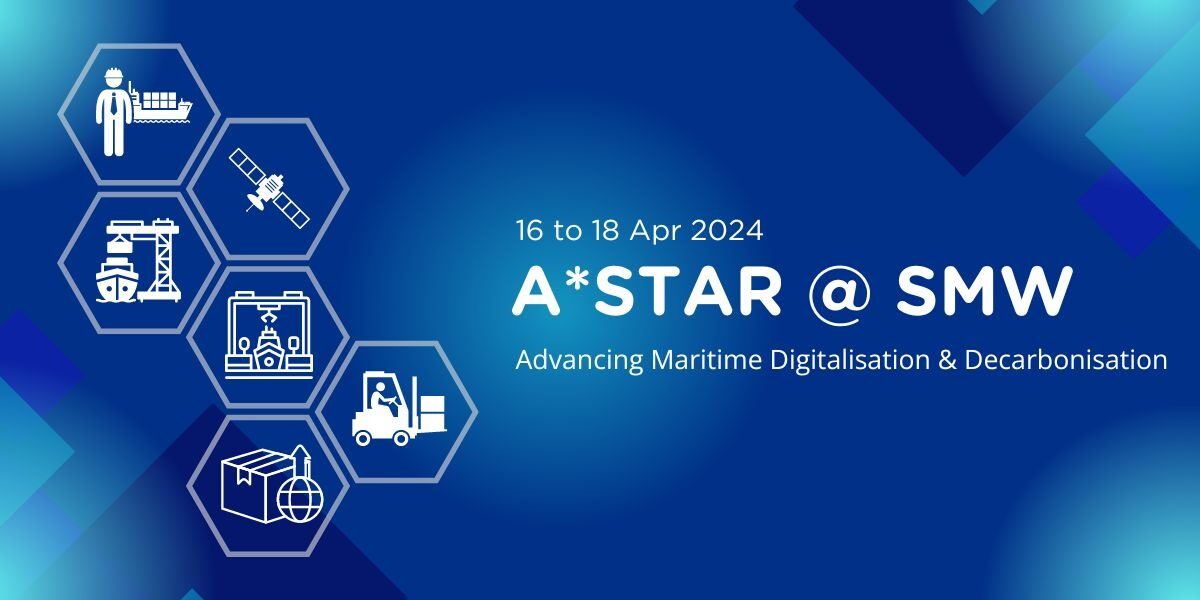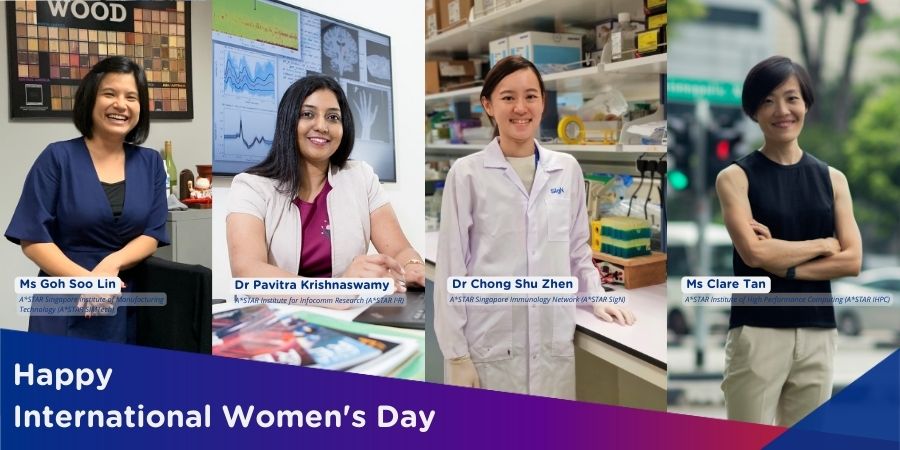AI-based System for JIT Operations (AI4JIT)
With an impetus to double container throughput capacity amidst a projected increase in marine traffic within limited anchorage sea space in Singapore Port, Just-in-Time (JIT) initiative will fulfill Singapore’s ambition of 72-hour forecasting and optimising marine traffic amidst this backdrop. The JIT arrival is among the most practical and effective operational decarbonisation measures. This approach aims at reducing port congestion by reducing vessel waiting time and fuel/emission.
AI-based System for JIT Operations (AI4JIT), jointly developed system with industry collaborators, allows for advanced planning and updated coordination of critical JIT events among terminal, ships, and port services. AI4JIT has passed fundamental functional tests with approximately 11% saving of total fuel consumption and 3-4 hours of waiting time reduction compared to non-JIT in ideal scenarios and reduced ship density in port.
A*STAR is seeking to partner with the shipping firms for a live JIT trial to advance the AI4JIT prototype into a deployable state.
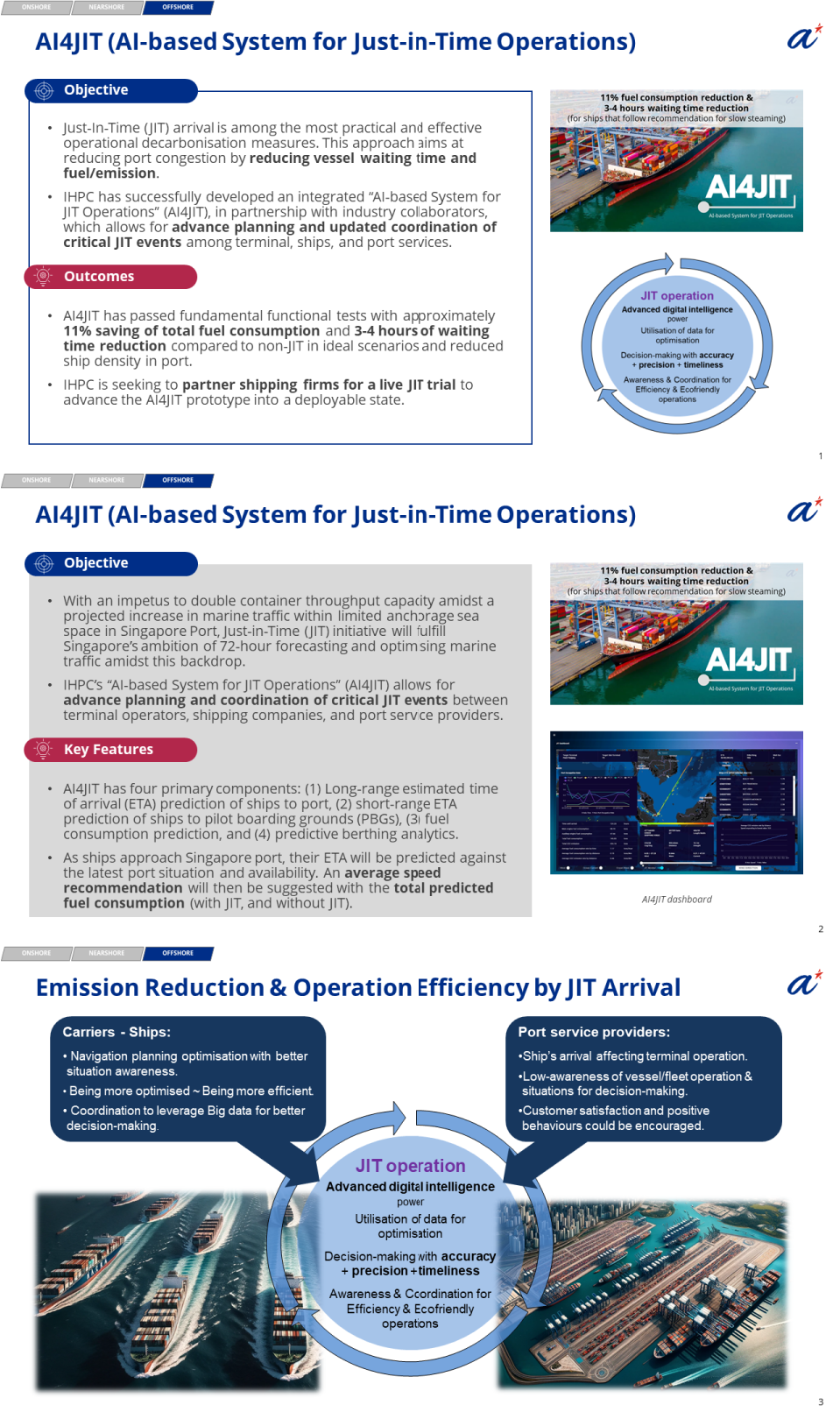
Distributed Acoustic Sensing (DAS) on Subsea Cables
a. Distributed Acoustic Sensing (DAS) transforms subsea cables into extensive sensor networks, detecting disturbances along optical fibres such as acoustic, thermal, vibration, and strain. Utilising existing telecom or standard optical fibres, it employs algorithms for event detection and classification, enabling comprehensive environmental monitoring through large-scale mapping of vibration, deformation, temperature, and anomaly detections.
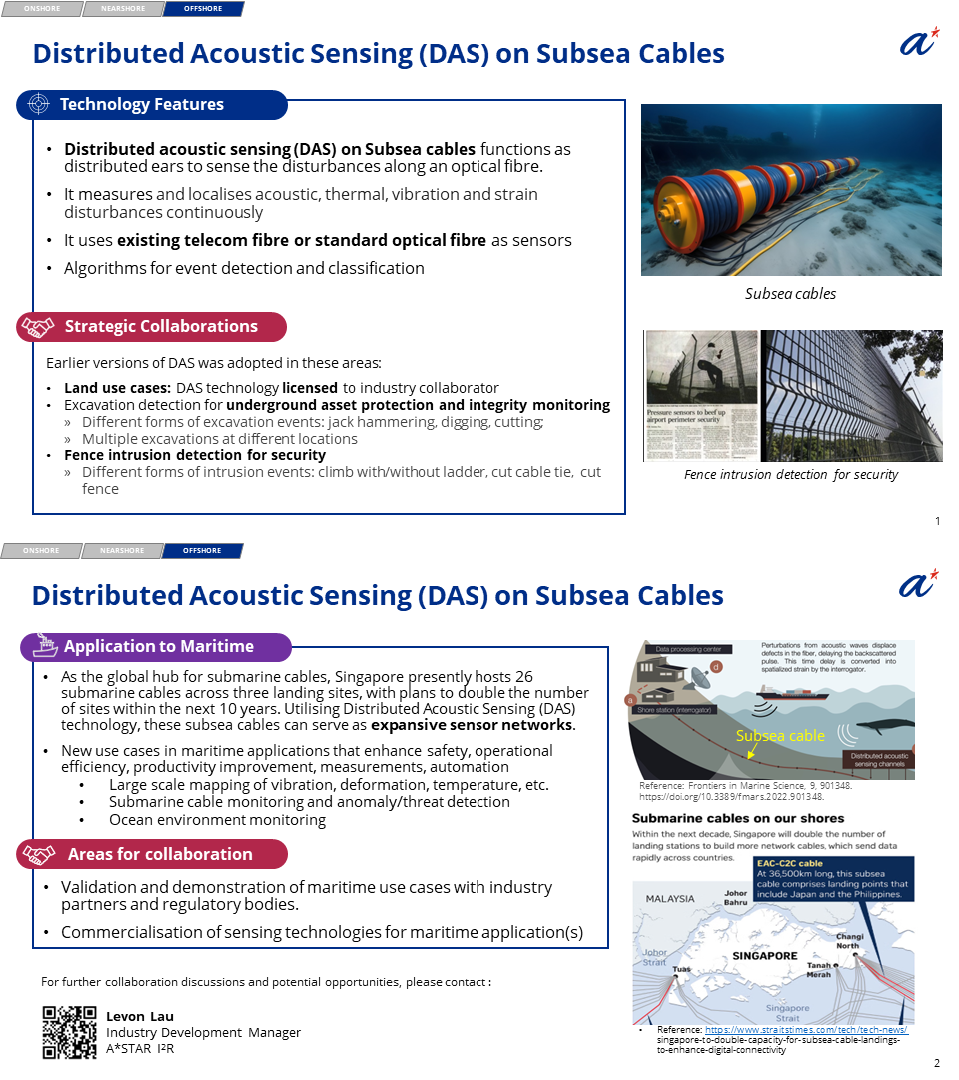
Global Supply Chain Resilience
By harnessing business innovation and ensuring prompt information sharing among stakeholders affected by delays, the Virtual Watch Tower (VWT) network can relay essential data to enable corrective actions, such as rerouting via air transport. Currently under development, the emphasis is on effectively managing public and private data, establishing system architecture, enhancing the VWT middleware, and developing a universal plug-in and interface for easier integration, facilitating smoother onboarding for new members of the VWT ecosystem.
Seeking forward-looking organisation to be part of the consortium to contribute and drive adoption.
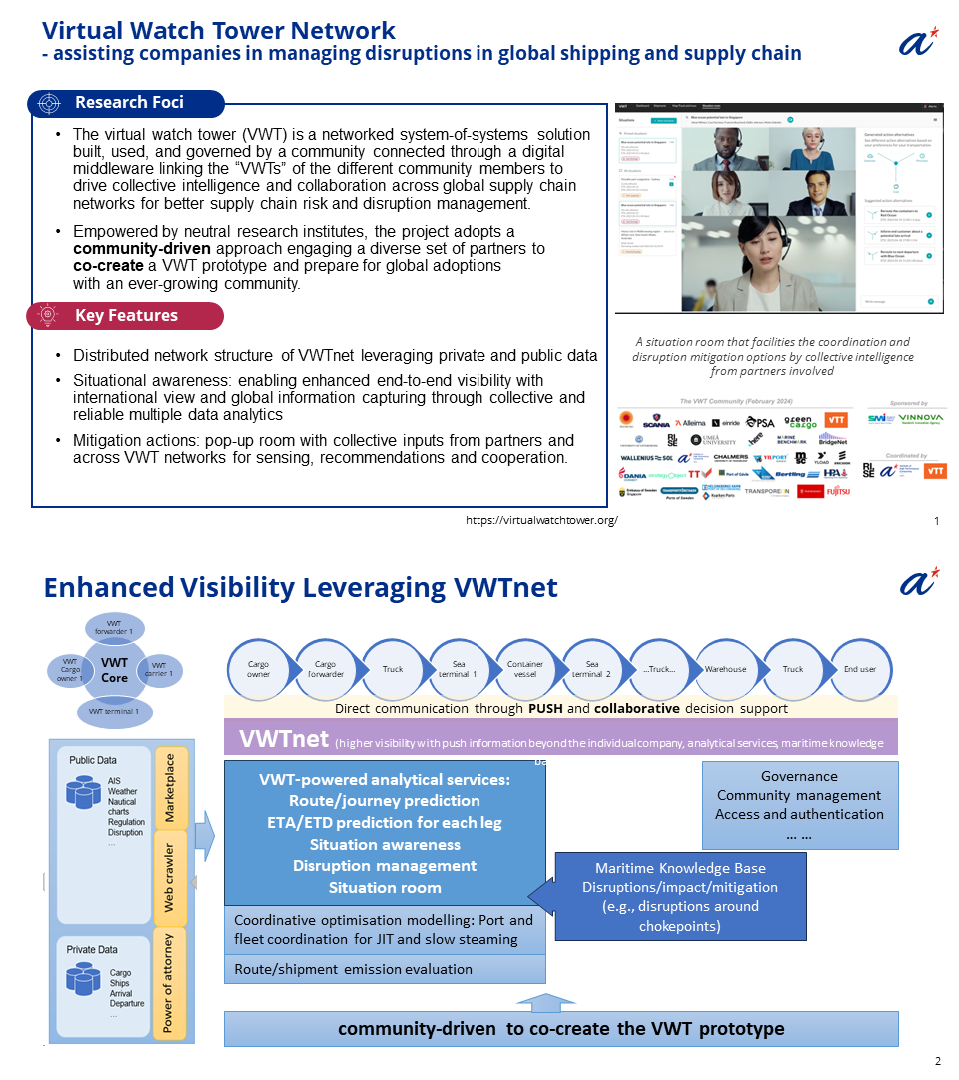
Offshore Wind Farms
Offshore wind supplied about 8% north Europe’s total electricity generation by 2018, and target to 30% of the total electricity generation by 2030. Annual market is reaching €50 billion in 2024. A rapid increase in demand for offshore wind energy catalyses substantial advancements in wind turbine technology. Floating offshore wind turbines (FOWTs) operate in an exceptionally intricate environment, where the interplay of wind, waves, and currents presents unique challenges. The dynamics of floating platforms and mooring lines further complicate the system, making accurate predictions of floater motion essential for ensuring the safety, structural integrity, and efficient energy production of FOWTs.
A*STAR team has developed an integrated framework comprising of meteo-oceanographic analysis framework for environment conditions (current, wind and waves), high-fidelity computational fluid dynamics (CFD) and high-efficient numerical framework for fixed and floating offshore wind turbine performance evaluation. The comprehensive approach deepens the understanding of nonlinear phenomena, paving the way for the development of safer and more efficient designs.
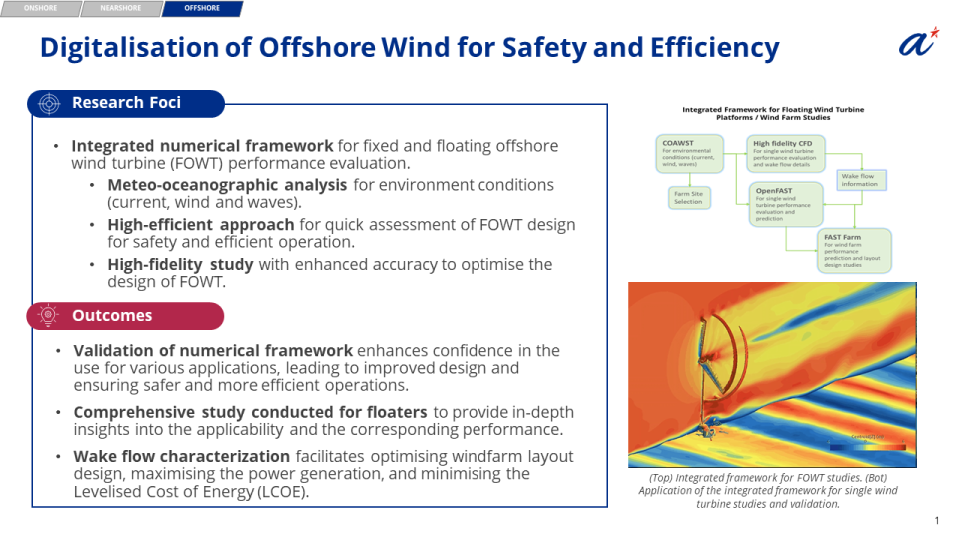
Low Carbon Technology Translational Testbed (LCT3)
First-in-class technology translational platform which employs plug & play modular approach in combination with integrated digital twin concepts to enable rapid configuration of a testbed and scale-up of different low-carbon technologies. LCT3 is envisaged to aid the acceleration of the translation and commercialisation of emerging low-carbon technologies from R&D to support Singapore’s energy transition journey.
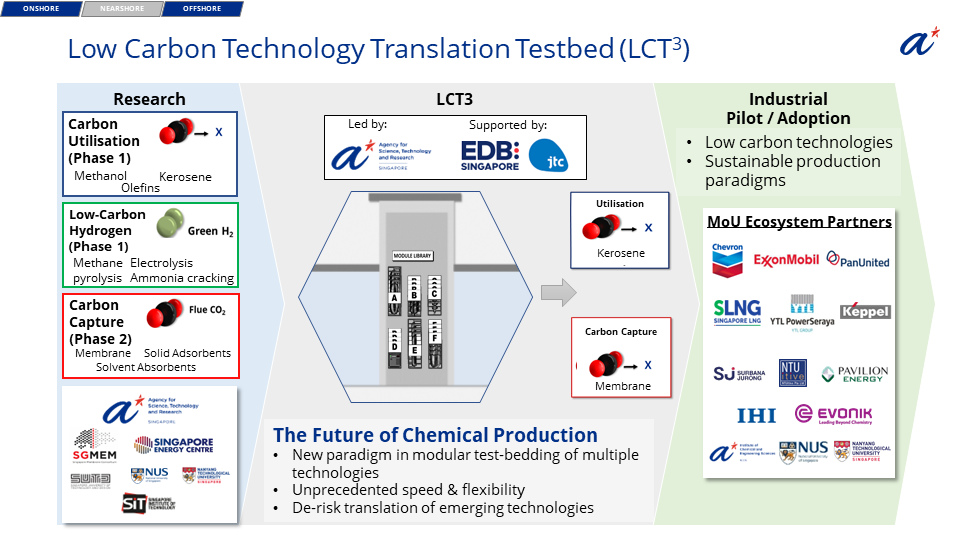
Predictive Maintenance for Marine Assets
This technology comprises a network of optical fibre sensors deployed for structural monitoring, detecting strain, pressure, and inclination changes. With adaptable node placement, it enhances digital twin accuracy for offshore platforms, facilitating proactive problem-solving. Offering real-time structural health monitoring, it detects defects early and enables predictive maintenance.
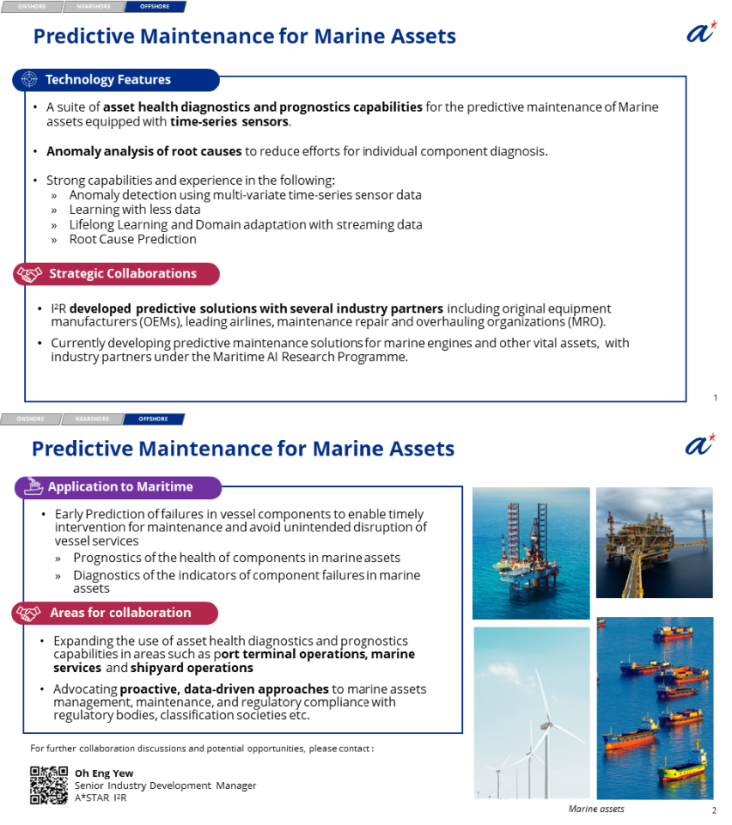
Quasi-Distributed Sensing System for Offshore Platforms
This technology comprises a network of optical fibre sensors deployed for structural monitoring, detecting strain, pressure, and inclination changes. With adaptable node placement, it enhances digital twin accuracy for offshore platforms, facilitating proactive problem-solving. Offering real-time structural health monitoring, it detects defects early and enables predictive maintenance.
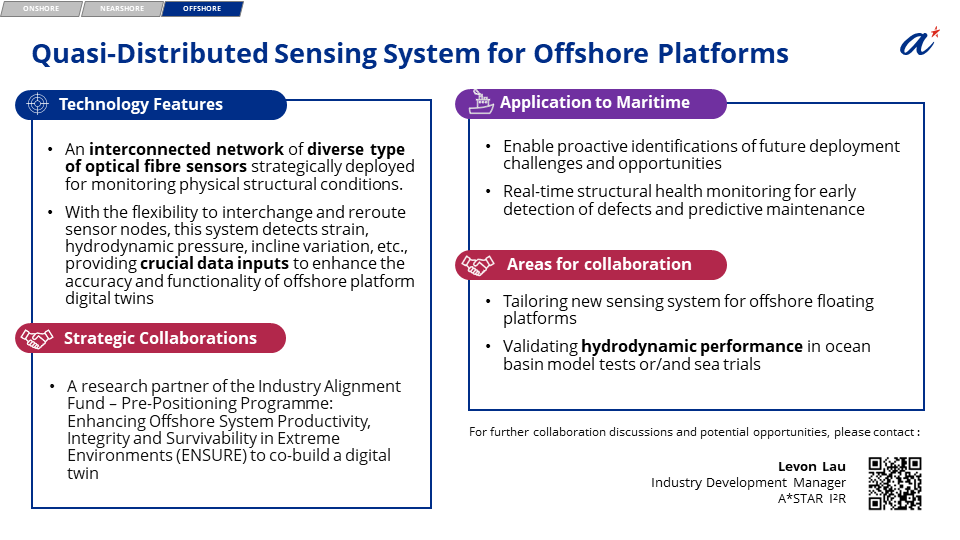
Shipboard CO2 Capture and Conversion to Natural Gas
A*STAR has pioneered efficient catalysts for directly converting CO2 using green ammonia into carbon-neutral methane or syngas. This groundbreaking technology can be seamlessly integrated onto existing cargo ships equipped with marine LNG engines. Remarkably, this approach enables the decarbonisation of cargo ships without requiring engine modifications.
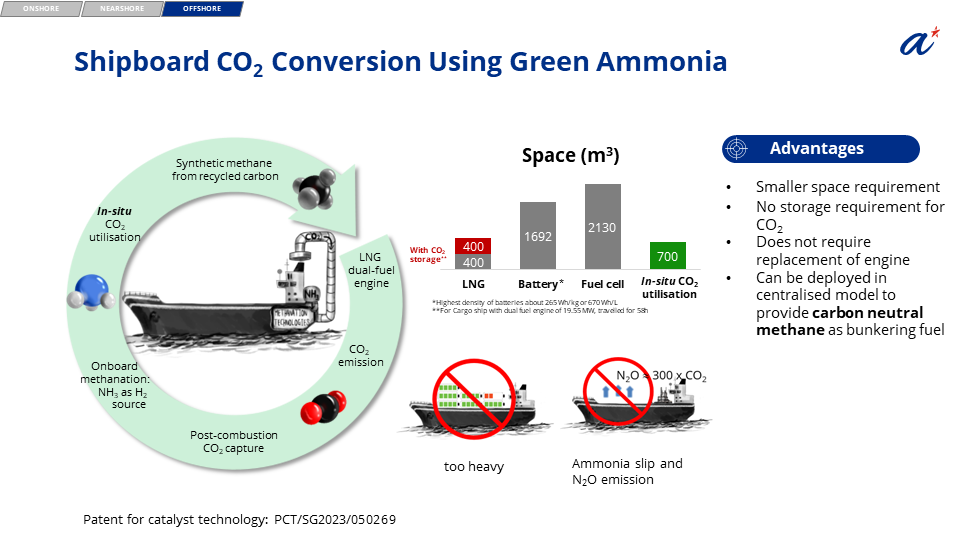
Transit Fuel Consumption Optimisation for Harbour Tug
The harbour tug transit fuel consumption optimisation software harnesses advanced algorithms and multi-sources data including traffic data, machinery data, operation data and environment data to optimise the transit route of tugboat, minimising fuel consumption while fulfilling the operation efficiency. A set of 3 tools, including tug operation state extraction, onboard sensor monitoring & issue alert, and fuel saving transit route optimisation, empower operators to review the 24/7 operational status of tugboats to identify areas for enhancement and optimise cost-efficiency and provide operators decision support on route and speed band for real-time transit fuel consumption optimisation.
A demonstrator is available, and the set of tools will be deployed for a live trial with an industry partner, we seek collaborators to extend the technologies for other types of harbour craft to enhance the efficiency and sustainability of port services.
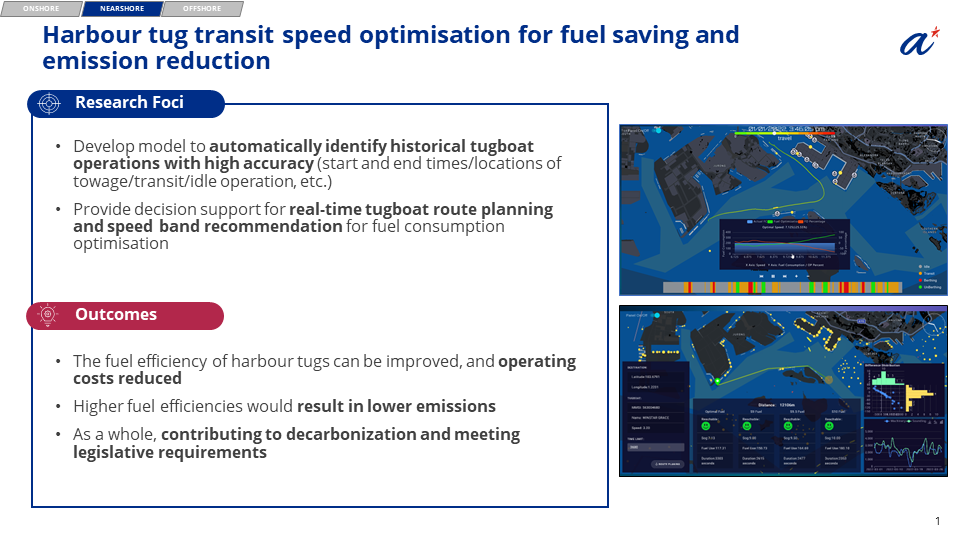
VHF Data Exchange System (VDES) for Maritime e-Navigation
VHF Data Exchange System (VDES) emerges as a pivotal maritime communication technology poised to gradually replace AIS in the next decade. It facilitates two-way data exchange, enabling e-Navigation applications, enhancing safety, security, and operational efficiency at sea and in ports.

